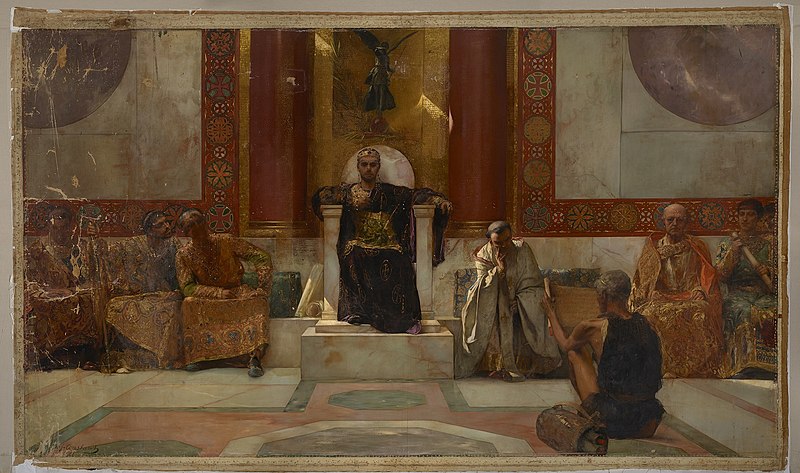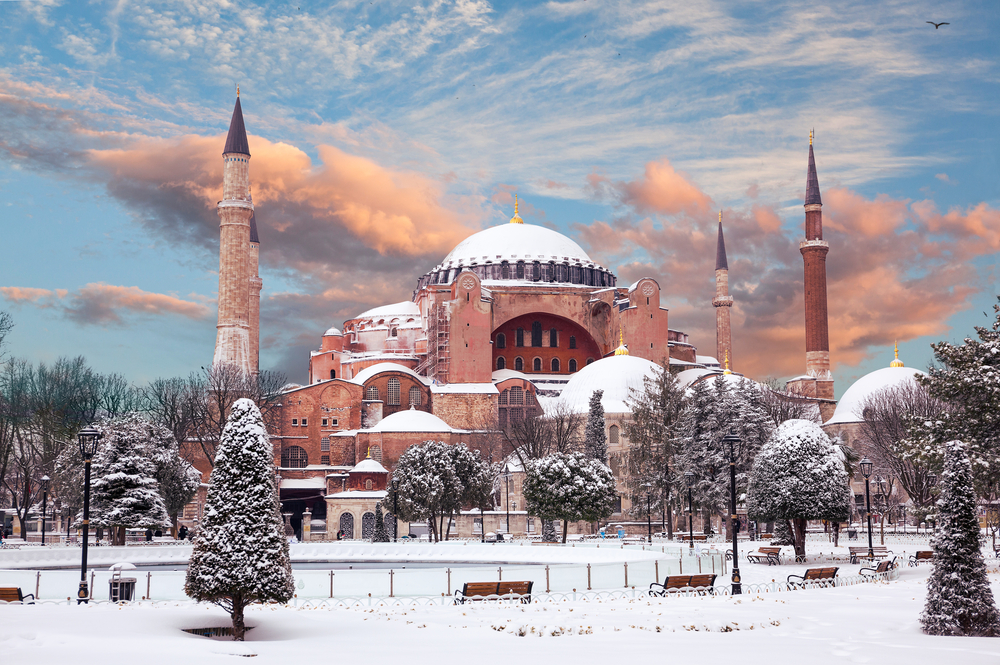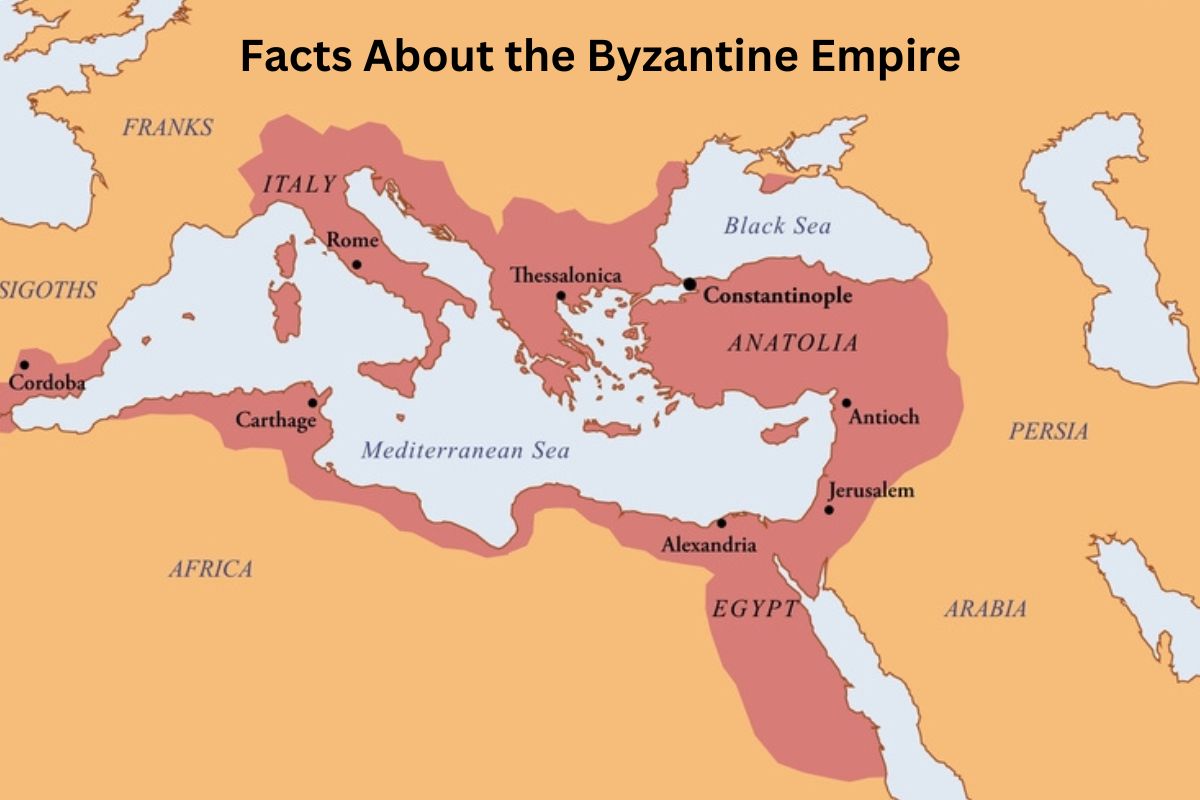The Byzantine Empire, also known as the Eastern Roman Empire, was a medieval state that existed from 330 AD to 1453 AD. It emerged as the continuation of the Roman Empire in the East, with its capital in Constantinople (modern-day Istanbul).
The Byzantine Empire was characterized by a strong centralized government, Greek language and culture, and a close relationship between politics and religion.
It witnessed significant achievements in art, architecture, and scholarship, while also facing various challenges from external invasions and internal struggles.
The empire eventually declined and fell to the Ottoman Turks in 1453, marking the end of an era and a significant shift in the balance of power in the Mediterranean region.
Byzantine Empire Facts
1. Byzantine Empire lasted from 330 AD to 1453 AD
The Byzantine Empire lasted for over a thousand years, from 330 AD to 1453 AD. It was a continuation of the Eastern Roman Empire and emerged after the decline and fall of the Western Roman Empire in 476 AD.
Also Read: Timeline of the Byzantine Empire
The Byzantine Empire was a major power in the Mediterranean region, with its influence extending over vast territories.
2. Capital was Constantinople (modern-day Istanbul)
The Byzantine Empire had its capital in Constantinople, which was strategically located at the crossroads of Europe and Asia. The city’s prime location made it a hub for trade and cultural exchange between the East and the West.
Also Read: Accomplishments of The Byzantine Empire
Constantinople was also a symbol of Byzantine power and wealth, renowned for its impressive architecture, massive fortifications, and the presence of important institutions.
3. Greek language and culture heavily influenced the empire
Greek language and culture played a significant role in the Byzantine Empire. While Latin was still used in administrative matters during the early period, Greek gradually became the predominant language of the empire.
Greek culture, literature, philosophy, and art thrived in the Byzantine Empire, reflecting the influence of ancient Greece. The Byzantines adopted and adapted many aspects of Roman culture, blending them with their Greek heritage to create a distinct Byzantine identity.
Additionally, the Byzantine Empire was deeply influenced by Christianity, particularly Eastern Orthodox Christianity, which became the official state religion. The Byzantine emperors and the Byzantine Church worked closely together, forming a strong connection between politics and religion.
4. Strong centralized government with absolute power held by the emperor
The Byzantine Empire was characterized by a strong centralized government. The emperor held supreme power and was considered both the political and religious leader of the empire.
The emperor’s authority was often supported by a complex bureaucracy, which included various officials, ministers, and advisors. The empire had a well-developed system of governance and administration, with laws and regulations being enforced throughout its territories.
5. Emperor Justinian I expanded the empire to its greatest extent
Emperor Justinian I, who reigned from 527 to 565 AD, is one of the most famous Byzantine emperors. Under his rule, the Byzantine Empire reached its greatest territorial extent since the fall of the Western Roman Empire.

Justinian I launched military campaigns to reconquer lost territories in North Africa and Italy, which resulted in the temporary restoration of parts of the former Roman Empire.
Justinian is also known for his legal reforms, most notably the codification of Roman laws known as the Corpus Juris Civilis, or the Justinian Code.
6. Successfully defended against Persian and Arab invasions
Throughout its existence, the Byzantine Empire faced various threats and conflicts. It successfully defended against Persian invasions from the east and repelled Arab Muslim armies during the Arab-Byzantine wars.
The empire faced Viking raids in the north and contended with internal power struggles, including revolts and usurpations.
The Byzantines often relied on diplomatic negotiations, military alliances, and defensive strategies to protect their territories. The empire’s ability to withstand these challenges for centuries highlights its military and political resilience.

7. Known for grand Byzantine art and architecture, like the Hagia Sophia
Byzantine art and architecture were renowned for their grandeur and opulence. Byzantine artists and architects created awe-inspiring structures, such as the Hagia Sophia in Constantinople.
This magnificent church, built during the reign of Emperor Justinian I, showcased the Byzantine architectural style characterized by large domes, intricate mosaics, and ornate decorations.
Byzantine art also featured religious icons, frescoes, and manuscript illuminations, often conveying a sense of spirituality and divine presence.
8. Preserved and transmitted classical Greek and Roman knowledge
The Byzantine Empire played a crucial role in preserving and transmitting classical Greek and Roman knowledge. Byzantine scholars diligently preserved ancient texts by copying and translating them into Greek, ensuring their survival through the Middle Ages.
Byzantine universities and schools served as centers of learning and scholarship, fostering intellectual pursuits in various fields, including philosophy, mathematics, medicine, and literature. The Byzantines also made important contributions to the fields of astronomy, geography, and historiography.
9. Experienced a split with the Roman Catholic Church in the Great Schism of 1054
The Byzantine Empire had a complex relationship with the Roman Catholic Church. Over time, theological, cultural, and political differences between the Western and Eastern branches of Christianity led to a growing divide.
The tensions eventually culminated in the Great Schism of 1054, which resulted in the permanent split between the Eastern Orthodox Church, based in the Byzantine Empire, and the Roman Catholic Church in the West.
This schism marked a significant religious and cultural divide between the Eastern and Western Christian traditions that still exists today.
10. Declined due to invasions, internal struggles, and the Ottoman conquest in 1453
The decline and fall of the Byzantine Empire can be attributed to a combination of factors. External invasions played a significant role, such as the Fourth Crusade in 1204, when Western European crusaders sacked Constantinople and established a short-lived Latin Empire.
This weakened Byzantine power and allowed rival powers, including the Ottoman Turks, to gain territory. Internal power struggles, dynastic conflicts, and inefficiencies in governance also contributed to the empire’s decline.
Finally, in 1453, the Byzantine Empire fell when Constantinople was conquered by the Ottoman Empire, bringing an end to the Byzantine Empire and marking a significant turning point in world history.
